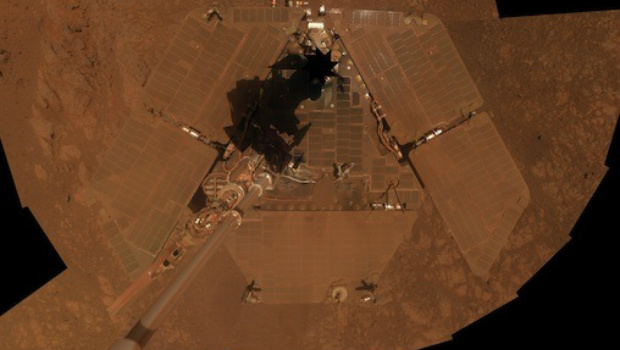After 10 years on Mars, NASA’s rover Opportunity has discovered evidence of an ancient wet and mild environment that is much older than previously thought.
The discovery is giving scientists further indication that the Red Planet might have been able to sustain life.
“These rocks are older than any we examined earlier in the mission, and they reveal more favorable conditions for microbial life than any evidence previously examined by investigations with Opportunity,” said Ray Arvidson, Opportunity’s deputy principal investigator and a professor at Washington University in St. Louis.
Arvidson called Opportunity’s latest finding a “landmark” and added that he’s excited to see what it will discover next.
“The more we explore Mars, the more interesting it becomes,” said Michael Meyer, lead scientist for NASA’s Mars Exploration Program, in a statement this week. “These latest findings present yet another kind of gift that just happens to coincide with Opportunity’s 10th anniversary on Mars. We’re finding more places where Mars reveals a warmer and wetter planet in its history. This gives us greater incentive to continue seeking evidence of past life on Mars.”
The more NASA’s robotic rovers and orbiters discover about the planet’s geology, water reserves and atmosphere, the more data scientists and engineers have to work with in their efforts to get humans on Mars by the 2030s.
“Finding water is like finding gold,” said John Connolly, NASA’s acting chief exploration scientist, in a press conference earlier this month. “It’s the stuff of rocket fuel. It’s what astronauts will need. Finding that there are large amounts of water on Mars is the one find that’s changed our way of thinking about human exploration of Mars.”
The rover, which landed on Mars on 24 January 2004, has driven 24 miles, largely in a loop, scanning the ground for interesting rocks to investigate.
Opportunity is working about halfway around the planet from Curiosity, NASA’s latest robotic rover to land on Mars. Curiosity began its mission on the Martian surface in August 2012. So far, the newest rover has found evidence of ancient water flows as well as water in the Martian soil.
The longest working rover on Mars, Opportunity, along with its robotic twin Spirit, were launched in the summer of 2003. Scientists hoped the rovers would survive to work on the Martian surface for three months. Spirit, which sent more than 128,000 images of Mars back to Earth, worked for about seven years before it became stuck in soft sand and was abandoned in 2010.
NASA noted on Thursday that despite the length of it’s deployment Opportunity’s health has not degraded noticeably during the past year.
The space agency said Opportunity is examining a rock that is unlike anything scientists have been before on Mars.
“Over the past decade, Mars rovers have made the Red Planet our workplace, our neighbourhood,” said John Callas, manager of NASA’s Mars Exploration Rover Project. “The longevity and the distances driven are remarkable. But even more important are the discoveries that are made and the generation that has been inspired.”
Sharon Gaudin, Computerworld
@sgaudin sgaudin@computerworld.com





Subscribers 0
Fans 0
Followers 0
Followers